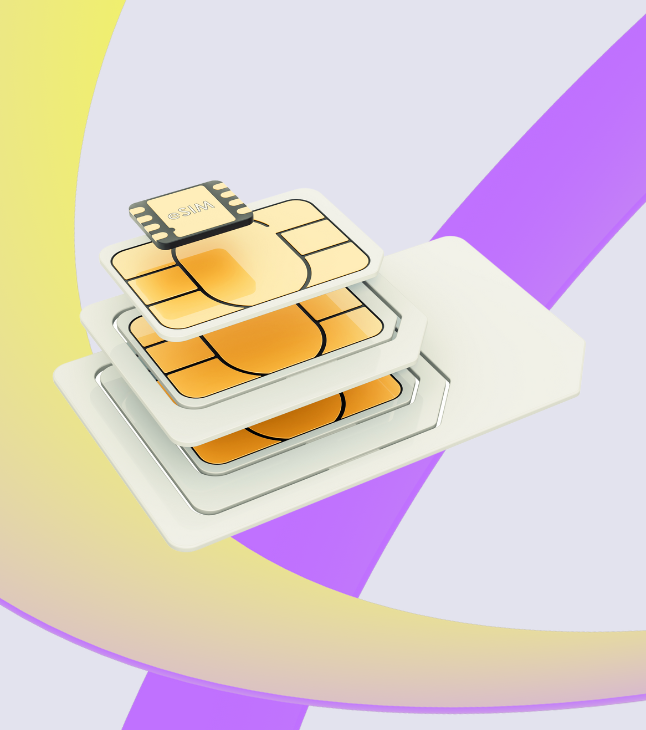Are you ready to discover the exciting world of IoT-based solutions in smart cities? IoT technology is rapidly changing how we live and work, and the application of IoT in a smart city is at the forefront of this revolution.
The idea of using IoT to create smarter, more connected cities is capturing the imagination of city administrators everywhere. But bringing this vision to life takes more than just cool tech. It requires a reliable and efficient network infrastructure to support the wide-scale implementation of IoT-based smart city applications. With the growing number of options for cellular IoT networks, the future of smart cities powered by IoT is looking brighter than ever. So, let’s dive in and explore the possibilities of IoT in smart cities!
IoT-based solutions for Smart Cities
How can smart cities benefit from the Internet of Things? And do we really need it?
In short: “In many ways” and “YES!”. IoT can help city administrators better execute, monitor, and control different areas and operations of the city. In addition, these smart city solutions can address various demands and challenges in the town. Here are 5 points of smart cities’ IoT examples:
- IoT Public Transportation
- IoT can transform the urban public transportation experience with the help of cellular IoT networks like 5G. Smart city IoT transportation can aim to create a network of IoT sensors that connect transportation mediums with the Internet through data. IoT public transport can also help monitor and mitigate traffic congestion challenges over time. Such data public access data can reveal the usage patterns and gaps in public transport. Through IoT, data such as ticket sales, footfalls, arrivals, departures, and delays can be used to improve the travel experience, improve infrastructure and follow better punctuality.
- Use of IoT in Smart Waste Management
- Smart waste management can focus on cleaner, hygienic, and healthier living within sustainable cities. Traditional waste management systems can improve in areas such as waste collection, cleansing, detoxification, and disposal. IoT-based waste management can save fuel, guide waste container pickup, monitor disposal, and eliminate toxic waste before polluting cities.
- IoT Smart Meters
- Smart city implementations using IoT can also transform the use of metering solutions. Smart IoT meters can simplify management for administrators and consumers, whether for electric, water, or gas consumption. These smart meters can be laid out across every home in a smart city and connect them all with the city supply authorities.
- Smart Street Lights
- As the name suggests, smart street lighting solution has a somewhat simpler function of IoT, where street lights can be managed and controlled remotely. In addition, smart lighting aims to optimize power consumption within smart cities and use electricity only as it’s necessary.
- Air Quality Monitoring
- Air quality monitoring can help measure the environmental conditions in different parts of the city. It can alert of pollutants in the air and allow the administration to take necessary actions, enhancing public safety. IoT air quality monitoring can help make cities more sustainable.
- EV charging stations with IoT connectivity
- EV chargers play a vital role in the future of smart cities. With the EU’s plan to stop making cars that run on fossil fuels by 2035, we need to ensure there are enough charging stations for people to switch to electric cars smoothly. The goal is to have 1 million charging points across Europe by 2025, but we’re currently only at 330,000, and they’re not evenly spread out. It’s crucial to avoid losing money by ensuring that all charging stations are being used effectively. However, the challenge is figuring out where and when the demand will be high or low, as some stations may be more popular than others. By using cellular IoT, we can make EV charging stations even more useful. It lets us track all the stations and get a complete picture of what’s happening. We can even predict when maintenance might be needed and take care of it from afar. With remote monitoring, we can operate and maintain the stations more efficiently, which means less time and money spent on inspections and detecting faults on-site. It’s a smart way to keep the charging stations up and running smoothly, so people can keep their electric cars charged and ready to go!
How is IoT being implemented in Smart Cities?
Smart city solutions require a handful of IoT technology components that are integral to their implementation.
Here is a list of essential elements of IoT technology:
IoT network infrastructure: A solid network infrastructure is crucial to implement IoT in smart cities. The network is the backbone of any IoT solution in a smart city. For example, depending on their needs and requirements, a city can choose between licensed networks like 4G, 5G, or LTE-M, or unlicensed networks like Wi-Fi or LoRaWAN.
IoT hardware: sensors, actuators, and gateways: Once the Internet is established, IoT solutions are implemented with necessary sensors, actuators, and gateways to collect data and serve a particular smart city application. The hardware setup is essential to connect and interface the real world with Information Technology.
IoT data management: The next step is providing a database solution to store the collected IoT data if the hardware infrastructure and network connectivity are there. Today, many datalakes and data warehousing solutions can store chunks of data from various IoT applications. A scalable database can withstand a massive number of users.
IoT user interface through web & mobile: Lastly, a user-friendly interface is necessary to access the insights and data from IoT devices. This can be achieved through a web or mobile application. For example, city administration can access and control smart city operations through a mobile app, making managing the city more efficient and streamlined.
IoT Enabled Devices: Smart cities use IoT-enabled devices, like smart meters, streetlights, waste management systems, public transport systems, and traffic management systems, to collect and transmit data to central systems. For example, in Amsterdam, smart meters are installed in homes to monitor energy usage and provide citizens with insights to reduce their carbon footprint. Similarly, smart streetlights are used in Singapore to reduce energy consumption and enhance public safety. In addition, these devices provide real-time insights into city operations, enabling effective decision-making.
IoT Data Analytics: Smart cities leverage IoT data to gain valuable insights and improve operations. Cities use advanced analytics techniques like machine learning and artificial intelligence to process massive amounts of data and provide actionable insights. For example, in Dubai, IoT and data analytics have improved waste management efficiency, resulting in a reduction of 40% in waste transportation costs. In addition, this data helps cities optimize their operations, reduce waste, and improve services for citizens.
IoT Security: Security is a growing concern as IoT becomes more widely used in smart cities. As a result, municipalities must ensure that collected and stored data is secure and protected from cyber threats. Essential security measures, such as encryption, secure data transmission, and access control, are critical to maintaining the privacy and security of citizen data. For instance, in Chicago, the city has implemented a secure network for IoT devices to ensure that data collected from smart meters is protected from cyber threats.
IoT Integration with Existing Systems: Lastly, smart cities need a seamless integration of IoT technology with existing systems, such as city management systems, emergency services, and public transport systems. Integration helps cities leverage existing infrastructure and resources to deliver smart city services effectively. For example, in London, integrating IoT with the public transport system has improved the efficiency of the transport network, resulting in reduced wait times and improved services for citizens.
In conclusion, implementing IoT in smart cities requires integrating various components, including IoT network infrastructure, hardware, data management, user interface, analytics, security, and integration with existing systems. These components work together to deliver comprehensive solutions for smart city management.
IoT powered Smart Cities
At Freeeway, we help public administrations transform urban lives using their low-cost and reliable smart city IoT application implementations. Let us know about your use case, and we will provide you with free IoT SIM cards and IoT Software to test and manage your solution for smart cities worldwide.
Your form entry has been saved and a unique link has been created which you can access to resume this form.
Enter your email address to receive the link via email. Alternatively, you can copy and save the link below.
Please note, this link should not be shared and will expire in 30 days, afterwards your form entry will be deleted.




